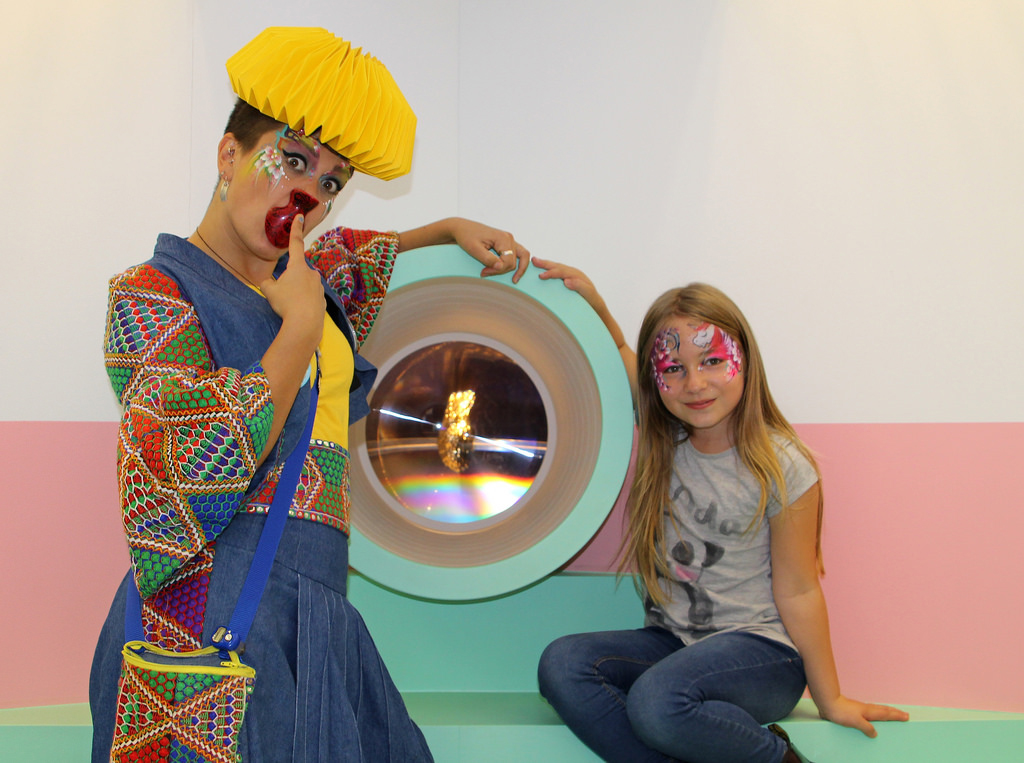Following the release of a report into the impact of the first 3 years of Spirit funding, Debbie Lye reflects on our achievements.

On lifting spirits, leaving a legacy… and gilt noses

Earlier this year, a pop-up shop in one of Hull’s city centre arcades opened for business. In its window, attracting passers-by, was a golden nose.
On offer inside was the chance for ‘customers’ (there was no financial transaction) to create their own nose-masks, cast from a mould of their faces taken on the shop floor. All craft materials, and coffee and tea, were laid on.
Over its nine weeks of doing business, the Gold Nose of Green Ginger shop welcomed hundreds of curious locals, who dropped in to craft a new nose with the help of Hull 2017 volunteers [spoiler alert: the ‘history’ behind the gilt hooter on display was made up by Land of Green Ginger, one of the remarkable arts and culture projects Spirit of 2012 funded as part of its support for Hull UK City of Culture 2017].
As the weeks went by, dozens of regulars made a visit to the shop part of their daily routine – so much so that when one elderly lady had an accident at home, she sent her daughter to the shop the next day to reassure the volunteer staff that all was ok. They had noticed her absence, and they had been worried.

This might not be what you think of when you imagine the work of Spirit of 2012, which was founded to continue and recreate the spirit of pride, positivity and social connectedness that people experienced during the London 2012 Games. But it perfectly captures what we do: fund events that touch people’s lives, change people’s perceptions, and leave a lasting social legacy. The golden nose was permanently installed in Hull’s History Centre in a special ceremony to which all the shop regulars were invited. The History Centre now plays host to the same community connections as developed during the shop’s lifetime.
Today we release the findings of our research and monitoring into the impact of the first three years of Spirit’s funding. The report shows the value of what we do, conclusively linking an investment in events with increased wellbeing. The evaluation engaged with 28 of the 36 grantees we funded, asking participants and volunteers the same wellbeing questions asked by the ONS. The results are striking:
- Overall, how satisfied are you with your life nowadays? 9.91% increase
- Overall, to what extent do you feel the things you do in your life are worthwhile? 6.16 % increase
- Overall, how happy did you feel yesterday? 8.86% increase
- Overall, how anxious did you feel yesterday? (-)5.42% decrease
To understand these figures, we must look to the stories behind them. Through our Fourteen project, for example, we fund provision of sports and arts in local communities. In Northern Ireland, Helen and Joan were involved with a Long-Term Condition Management project which we supported – Helen had had depression for two years and Joan is a diabetic. They attended two exercise classes each week, receiving tailored support from the trainer. Joan explained that the classes got her out of bed in the mornings: ‘I’ve grown, both physically and mentally,’ she said. ‘If I hadn’t been [to the classes], I don’t know where I would be today.’
It’s a message we hear often. And our work is made more vital because many participants come to our projects with lower-than-average levels of wellbeing, yet we see a higher-than-average level of life satisfaction and happiness reported overall at the end of projects. On average, the increase from baseline to end line in the number of Spirit-funded participants or volunteers who report high levels of wellbeing is 7.9%. Our investment works.
Partly this is down to the way we engage. All of our grantees work with isolated individuals or groups, but many of them also work to engage a wider audience with the specific aim of bringing together people of different abilities and backgrounds. This has delivered some unexpected results. At our Inclusive Futures project, which empowered disabled and non-disabled people to play sport on equal terms, staff found that the carers of young people coming to the project were also open to taking part, and were able to do specific work with them, with really positive results.
We are proud that Spirit is helping break down the limiting perceptions of disability, and our report shows that we are also contributing to the wellbeing of our disabled participants. More than half of the people with disabilities (62%) who took part in our National Paralympic Day in 2013 reported a ‘more’ or ‘much more’ positive attitude after the event, and a similar number of non-disabled people thought they had a ‘more’ or ‘much more’ positive attitude to disabled people. As one participant put it: ‘actually we’re pretty much exactly the same, he’s just like missing his leg from the knee down, but me, him and Wayne Rooney are like kind of the same in that way… it certainly changed [my] mind.’
Our task now is to get even better: to tailor the ways we work with, and challenge, our grantees so that we’re even more effective. This report has proven the link between investing in events that bring people together, and increasing wellbeing. The projects we fund empower and engage their participants and volunteers, and this makes them happier. It’s a simple equation – and a very satisfying one.
